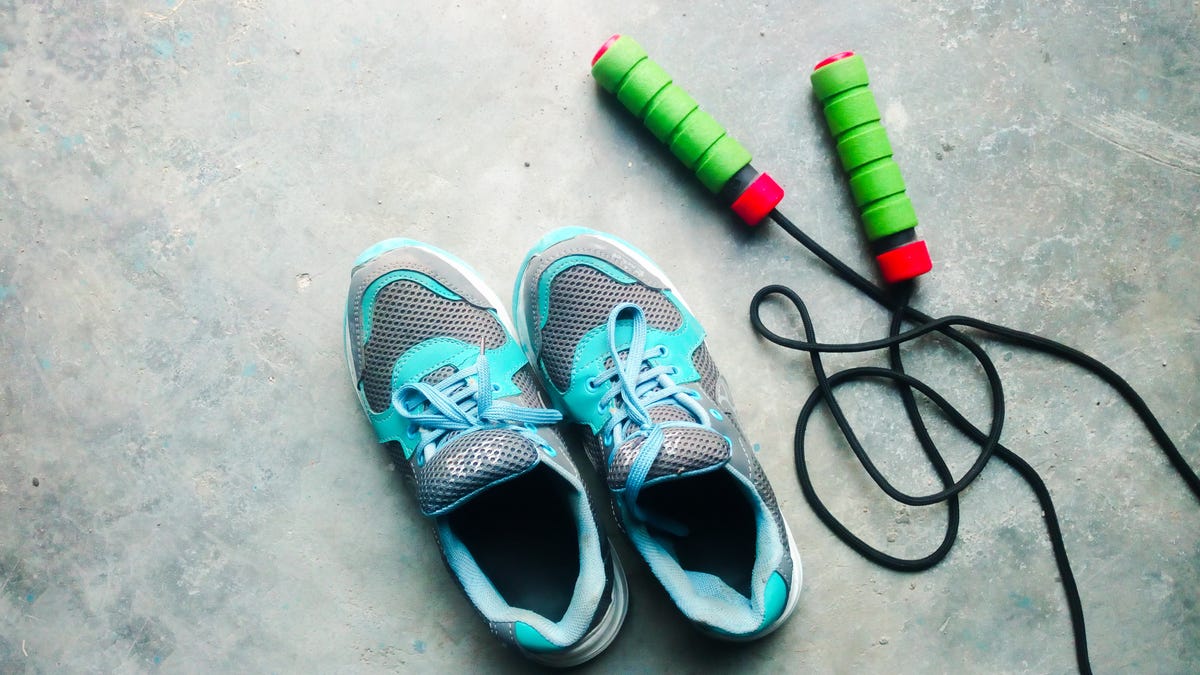New year, new workout routine. Here's how to avoid burning out
Even if you're in shape, you can burn out from overdoing a new workout. These tips will help your body adjust.

We've all heard about work-related burnout, whether from first-hand experience or from others who've experienced it, and it's a real threat to your mental and physical health. Burnout is not exclusive to work-related efforts, though. It can also happen on a physical level when you're starting a new workout routine and go a little too hard at the start.
Here's the real catch: workout burnout is not just for fitness newbies -- it can happen to anyone. When you're starting a new workout routine (even if you're in shape from doing other types of exercise previously), you can burn out from going too hard right out of the gate, if you don't take the right steps to recover and let your body properly adjust to the new workout you're adopting in your fitness routine.
"Whenever you start any new workout regimen, whether that be HIIT, running or Pilates, you can expect that your body will undergo a natural sort of 'shock to the system,'" says Brooke Taylor, certified trainer and founder of Taylored Fitness. "Any time you incorporate a new type of training into your workouts you will be recruiting the muscles in a different way," says Taylor.
You might be thinking, if you're already in shape, why is it taking you longer than normal to recover from exercise? Or maybe you're worried that you're not making the progress you want because you're so sore all the time. Here's why: When you pick up a new workout routine, like Pilates when you're used to running, for example, your body is using different muscles or using them in a different way than they're used to. "Running activates your fast-twitch muscle fibers to strike the floor and speed, whereas Pilates activates the small intrinsic muscle fibers surrounding the core, spine, glutes, etc. This may leave you more fatigued or sore from a different type of activation," explains Taylor.
If feeling extra-sore or tired after a workout is leaving you worried that you're out of shape or losing progress, don't worry. "In fact, it just means you are adding variety into your workout," says Taylor. And adding variety to your workout is a good thing, BTW. "It is very important that you incorporate other modalities of cross-training to prevent injury, muscle imbalances from forming and maintaining proper alignment. The same repetitive motion can lead to increased load over time, lead to tissue breakdown and cause injury," says Taylor. All of this means simply that it's not good to do one workout all the time, and variety is a good thing.
Keep reading on to find out how to help your body adjust to a new workout routine and avoid burnout.
Every time you start a new workout routine you use different muscles, which can make you feel more sore.
5 steps to adjust to a new workout (whether you're in shape or not)
"Every time you add something new, it is very likely that you will be a little sore, because you are shocking the body. You are working the body in a different range of motion, recruiting the muscle fibers in a different way, challenging your proprioception system and you may feel a little defeated," says Taylor. But all of this can be worked through with proper adaptation, which includes the steps below that Taylor designed to help you avoid injury and adjust well.
Use a foam roller before each workout
"Make sure you take the time to foam roll before every workout," says Taylor. "Self-myofascial release will break up any muscle adhesions in the body, lengthening the muscles back to what I like to call a 'neutral state.' This way when you add load you are not compensating as much and it gives the weaker muscles a chance to recruit with forced control and precision."
Warm up properly
"Make sure you make time to warm up properly. Especially when you are doing a HIIT, running or any other high-impact workout, so the body has time to get the blood flow moving," says Taylor. She suggests warming up on a treadmill, elliptical or Stairmaster, or doing dynamic mobility exercises. "Especially in the colder months when your muscles are naturally tighter and the joints may hurt a little more, the last thing you want to do is go from 0-100."
Stretch after every workout
"Make the time to do static stretches after each workout. This will help lengthen the muscles back to a neutral state and relieve some of the lactic acid buildup," says Taylor. She also recommends holding each stretch you do for 20 to 30 seconds and avoid pushing your stretch too far or past your flexibility threshold.
Rest and recover well
"Listen to your body and if you need to take a break -- take a break and do an active rest day in between. Recovery is key for building muscle, improving performance and body longevity," says Taylor. You can also try an Epsom salt bath to help relax your muscles and body.
Don't forget about good nutrition
What you eat before and after your workout is also key for feeling good and recovering well. "Don't skip meals. Make sure you are eating every 2 to 4 hours, incorporating nutrient-dense foods into your diet, lean meats, vegetables, fruits, legumes and whole grains," says Taylor. "Most importantly stay hydrated and replenish your fluids."

